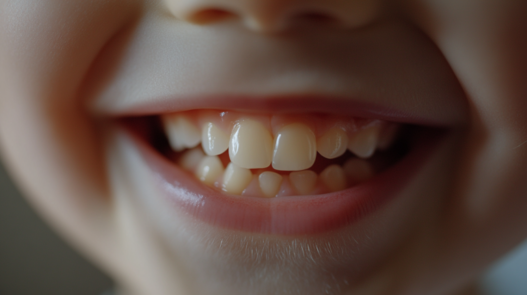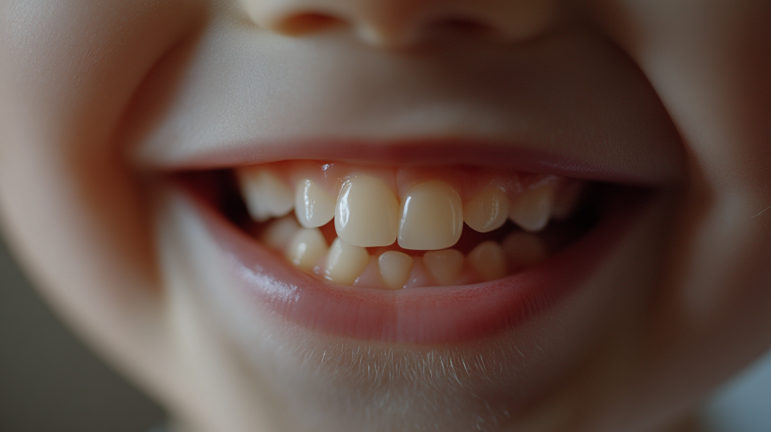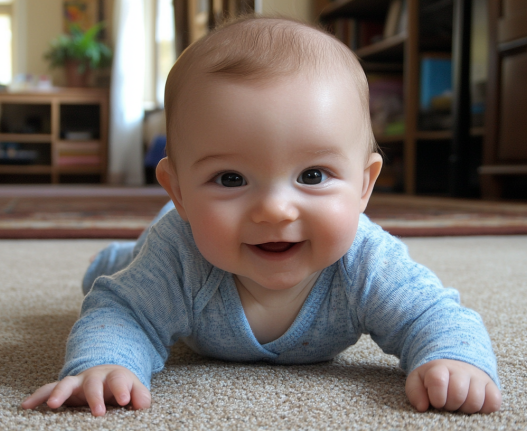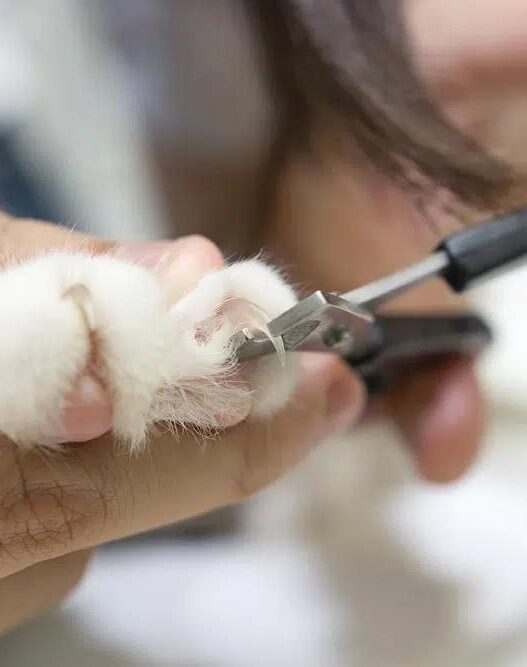As parents, we all want to protect our children’s teeth and ensure they grow up with healthy smiles. Many parents go to great lengths, fearing dental problems and costly treatments down the line. However, when it comes to dental care, there are several common misconceptions that can do more harm than good. Some well-meaning habits can actually damage children’s teeth without us even realizing it.
Let’s take a look at 5 behaviors that are commonly practiced, but could be harmful to your child’s dental health.
1. Feeding Soft Foods to Children Who Haven’t Fully Grown Teeth Yet
Many parents are overly meticulous about their child’s food, often making sure that foods are soft and easy to chew. This often leads to the habit of cutting fruit into small pieces or removing bones from meat, even when children are already able to chew harder foods on their own (typically after the age of one).
While this might seem like a way to protect your child’s teeth, it actually does more harm than good. Lack of hard food stimulation can prevent the jawbone from developing properly, especially during the teething phase. It can even interfere with the absorption of milk teeth, leading to the problem of “double teeth,” where adult teeth erupt before milk teeth fall out.
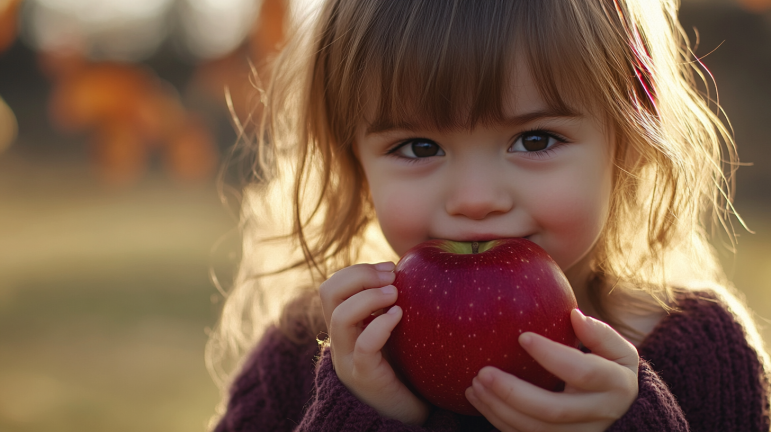
In addition, failing to chew hard foods means missing out on exercise for the temporomandibular joint (TMJ), which affects the entire jaw and facial development.
According to the World Health Organization’s feeding guidelines, children over 12 months old should begin trying a variety of foods with different textures, under parental supervision, while avoiding choking risks. Let your child try biting into whole fruits like apples or peaches, or gnawing on bones—this encourages proper development of their chewing muscles.
2. Brushing Teeth Immediately After Eating
After meals, food particles often remain in the mouth, leading parents to think that brushing teeth right away is the best way to ensure cleanliness and prevent tooth decay. While this might seem like a good idea, it’s not always the best option, especially if your child’s teeth are sensitive.
After eating acidic or sugary foods, the pH in the mouth can drop, making the enamel temporarily softer. Brushing immediately after can potentially wear down the enamel, causing discomfort and sensitivity.

What should you do instead?
It’s best to brush your child’s teeth twice a day, in the morning and before bedtime. After meals, encourage your child to rinse their mouth with water. If the food was particularly acidic or sticky, you can also use dental floss, a toothpick, or a water flosser to help clean their teeth more thoroughly.
3. Letting Your Child Brush Their Teeth Too Early
Every parent wants their child to become independent, especially when it comes to brushing their teeth. Many parents buy electric toothbrushes for their children, thinking that it will make brushing easier and more effective.
While electric toothbrushes can offer better cleaning efficiency, they are only beneficial when used correctly. It is important to ensure that your child is brushing with the proper technique, such as the Bass method, and cleaning all the hard-to-reach areas.
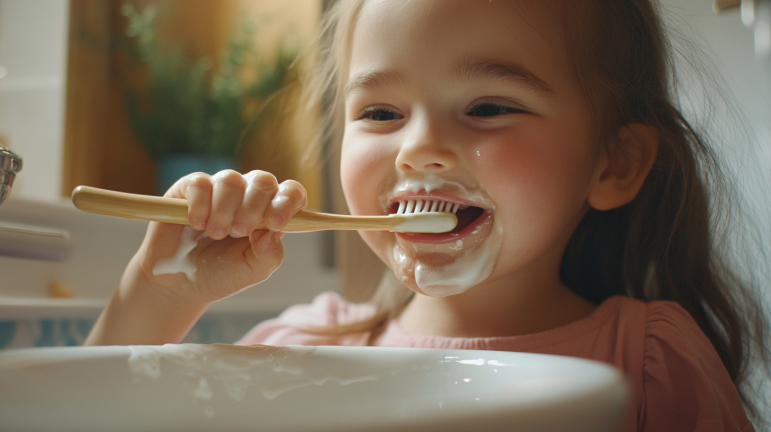
The reality is that most children under the age of 10 (and even some older children) struggle to brush their teeth correctly without help. A study showed that even after teaching kids the proper brushing technique, 50% of children were still unable to meet basic oral hygiene standards when brushing on their own.
Parents should continue supervising and assisting with brushing until the child is fully capable. You can gauge this by considering whether your child has the dexterity to tie their shoes or write their name. Typically, by the age of 10, most children can brush independently, but it’s always good to check with a dentist to make sure the child’s oral health is on track.
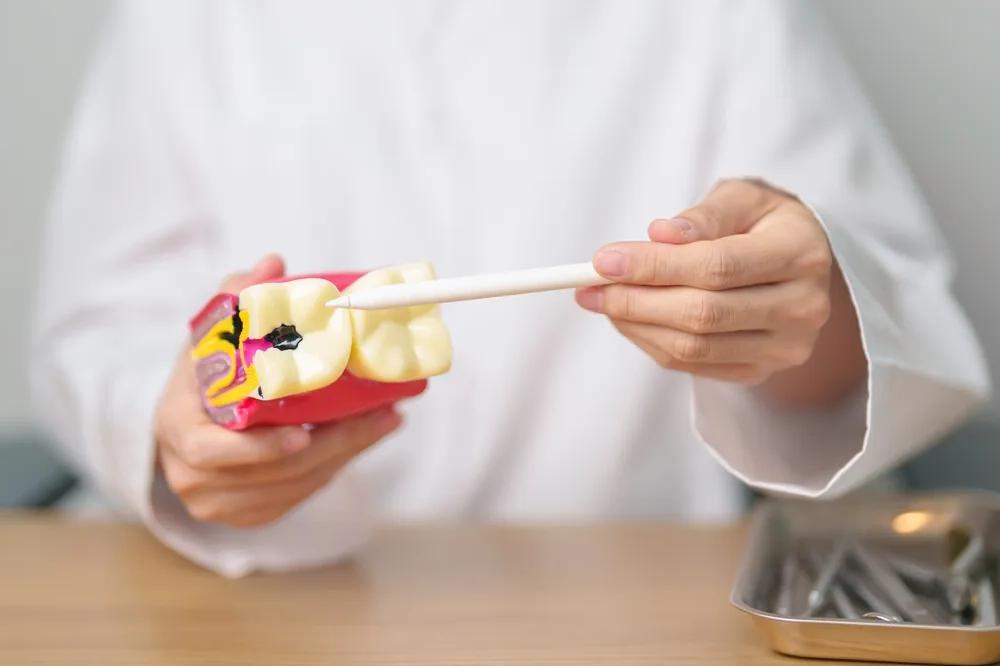
4. Using Whitening Toothpaste on Yellow Teeth
It’s common for parents to notice that their child’s new adult teeth look yellowish and wonder if whitening toothpaste could help brighten them. However, this is a mistake.
Adult teeth naturally appear slightly yellow because the enamel is more calcified than milk teeth, making it more transparent. The underlying dentin, which is naturally yellow, shows through. This is completely normal and should not be mistaken for staining or decay.
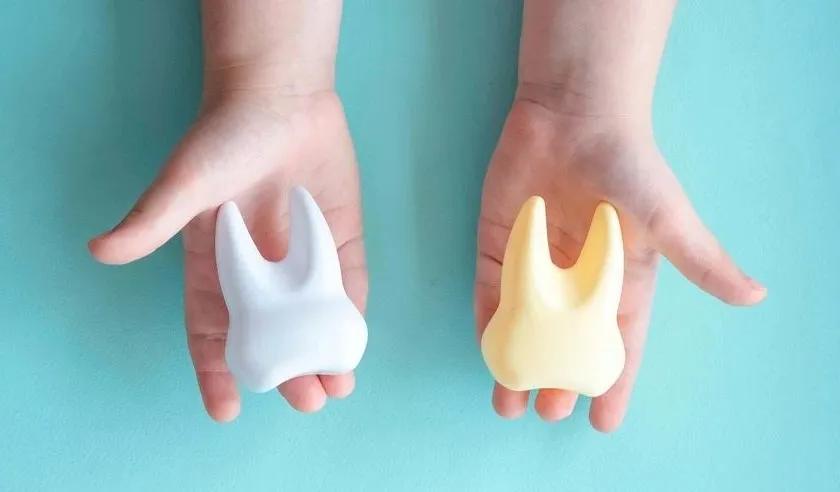
Using whitening toothpaste on children can cause damage to their enamel, as these products often contain abrasives designed to remove external stains. These abrasives are too harsh for children’s teeth and can result in excessive wear of the enamel.
It’s best to use toothpaste specifically formulated for children, which is gentle and safe for their developing teeth. Don’t rush to use whitening products unless directed by a dentist.
5. Scrubbing Black Stains on Teeth Aggressively or Getting a Professional Cleaning Too Early
Many parents panic when they notice black spots on their child’s teeth. However, these black marks are often not cavities, but rather pigmented deposits or stains that can accumulate on the tooth surface.
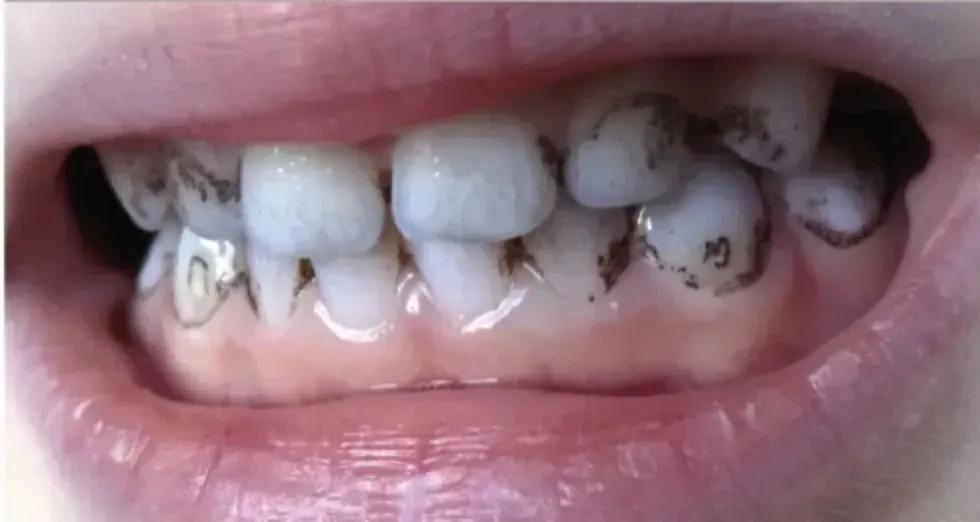
How do you differentiate between stains and cavities?
- Pigmented stains: These are surface stains and can be scraped or brushed off with the proper techniques.
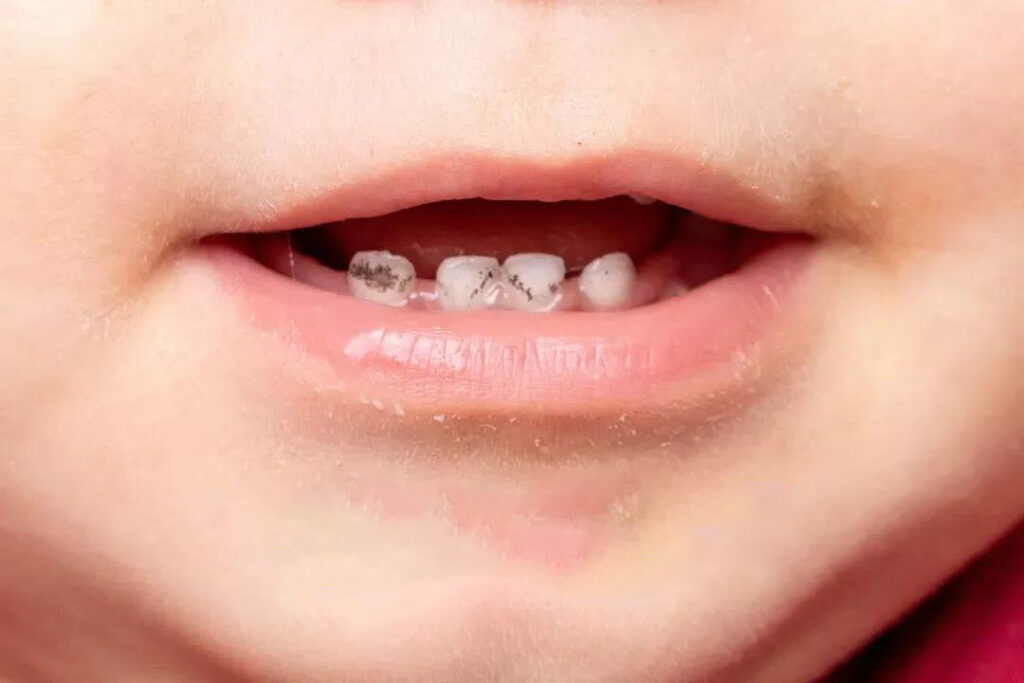
- Cavity marks: These are black spots that penetrate the tooth, typically indicating decay.
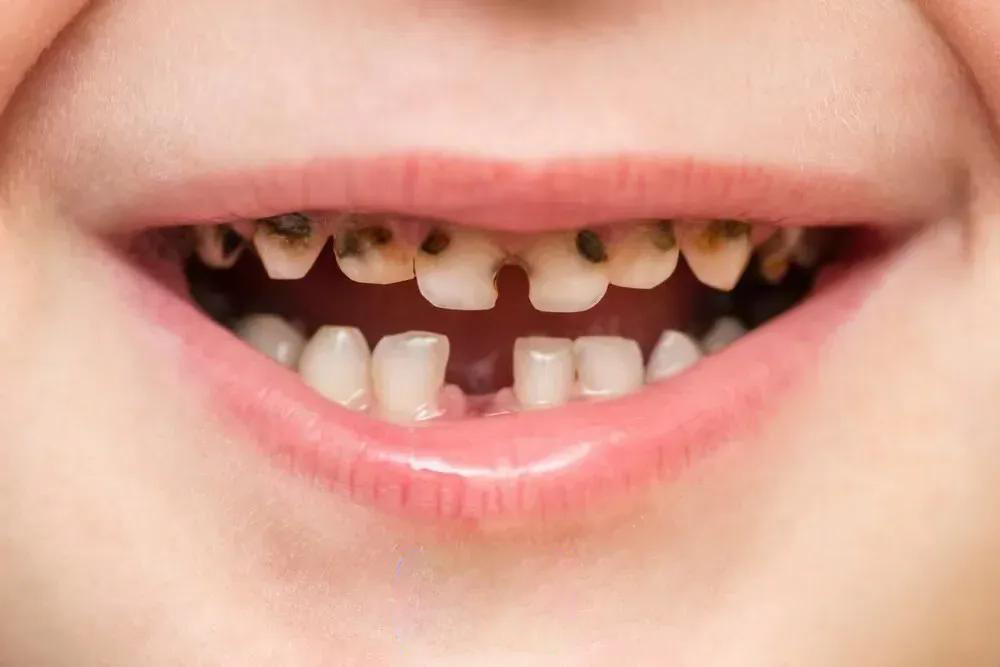
If the black marks are simply pigment stains, there’s no need to scrub aggressively or rush to have your child’s teeth professionally cleaned. Overzealous brushing or ultrasonic cleaning may damage the enamel, especially since children’s milk teeth are softer and thinner.
If the stains aren’t severe, they usually won’t affect the tooth’s health or cause any discomfort. Often, they will fade naturally as the child’s teeth mature. If the staining is significant, consult a dentist to rule out any underlying issues.
Conclusion
While we all want what’s best for our children’s dental health, some common habits, though well-intentioned, can actually cause harm. Always be mindful of the correct practices for oral care, and consult a dentist for guidance on when and how to introduce new routines or products. By avoiding these common mistakes, you can ensure that your child’s teeth develop healthily and strong for years to come.







